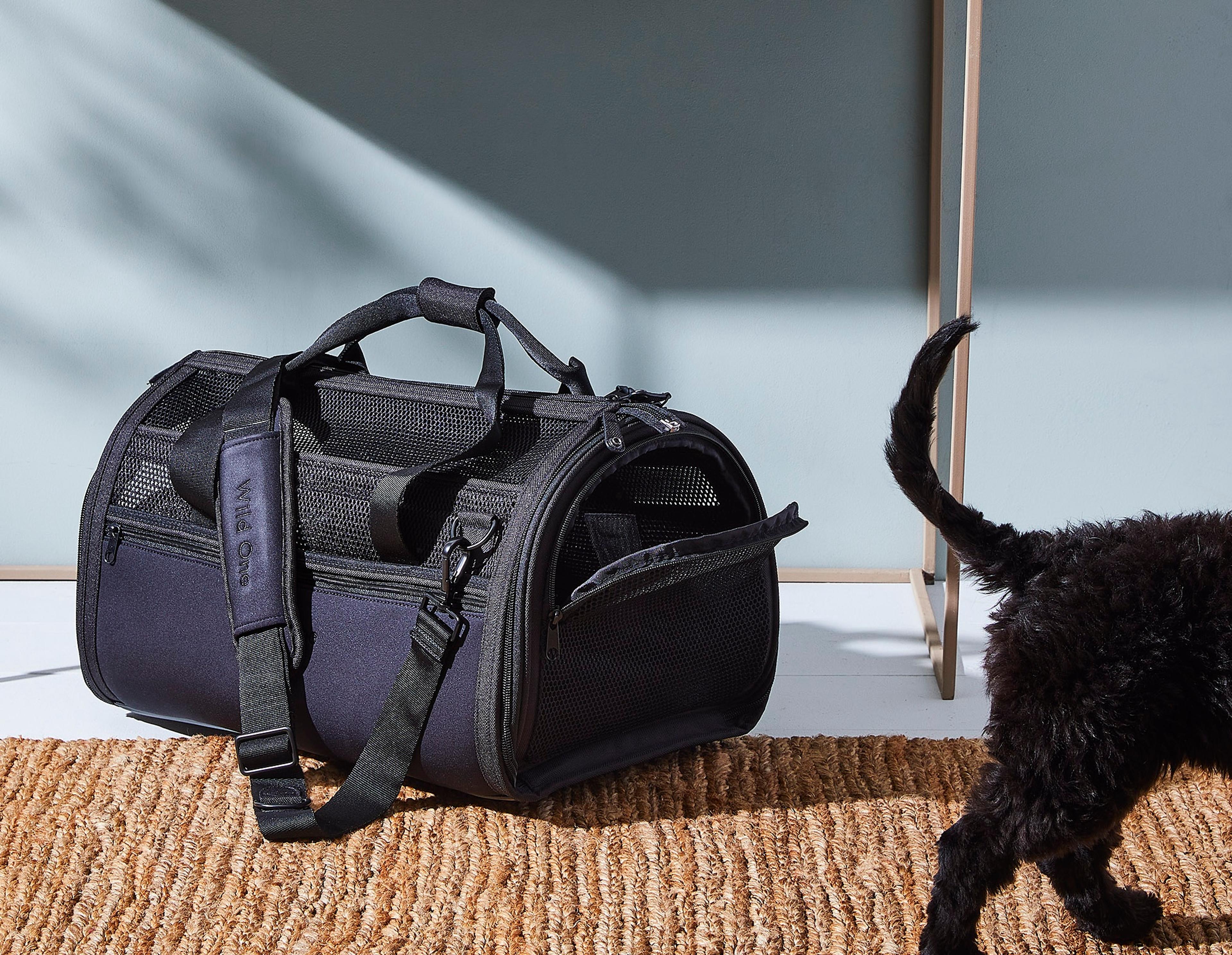Know Before You Go: Traveling With Pets
Leave the guilt behind by being prepared.
Published On

Photo by Julia Gartland
Everyone deserves a break from the daily grind, and few things restore the soul like a change of scenery. Whether you're chasing summer sun or cozy winter snow, bringing your pet along for the adventure is a dream for many pet parents. But stepping outside their routine can be stressful, and make us feel guilty for disrupting our pets routine. Suddenly, the questions creep in: Are they comfortable? Did we remember everything? Will they feel safe away from home?
No need to stress—this guide is your go-to checklist for traveling with pets, designed to make things easier for both of you. A little thoughtful planning goes a long way, from keeping their routines intact to making sure they feel safe and comfortable along the way. That includes staying consistent at mealtime with trusted food like Hill’s Pet Nutrition, so they feel at home—no matter where you’re headed. Let’s get into it.
Their Safe Space, On the Go
A familiar crate or carrier is one of the simplest ways to help your pet feel at ease from the start. If possible, stick with the one they already know—just make sure it suits your mode of travel. For car trips, ensure it fits securely while still giving them enough room to shift around comfortably. If you’re flying, double-check that the carrier or crate is airline-approved, and sized so your pet can stand, sit, and turn around with ease.
Whichever option you choose, add a soft blanket or padding to make it feel cozy and familiar—because a comfy pet is a calmer travel companion.
Toys, Bowls & Familiar Things

Speaking of things that feel like home, bring your dog or kitty’s favorite toys, their leash or harness, feeding and water bowls (with plenty of fresh water, always), and any other easily portable items that smell like home, keeping them more at ease in the air or on the road. Even doggie waste bags or the same kind of litter box and litter keeps things familiar, helping you stick to the same routine (more on that later).
Same Food, New Zip Code
Figuring out how to store and transport pet food while traveling can feel overwhelming—and raise a dozen questions before you even hit the road. But one of the most important things you should keep the same when travelling is what you feed your pet. With Hill’s Pet Nutrition, feeding guidelines are straightforward—and so is storage.
You can pre-portion Hill’s Science Diet dry food, based on your pet’s weight, and whenever possible, keep it in the original bag to preserve freshness. If you prefer using a container, opt for a clean metal one and place the bag inside—plastic can alter the food’s taste and smell. Store dry food in a cool, dry place below 100°F, and don’t forget to bring the measuring scoop if you’re bringing the whole bag to keep things properly portioned.
For canned food, keep unopened cans between 50–100°F and never freeze. Once opened, refrigerate and use within 5–7 days, sealed with a plastic pet food lid or wrap to lock in moisture and freshness. Refer to the back of your Hill’s Pet Nutrition package for storage instructions.
Treats That Travel Well
Everyone loves a treat—especially our pets. If treats are part of your routine for comfort or positive reinforcement, it’s worth keeping that consistency while on the go. A well-timed reward (within the portion guidelines on the package) can go a long way in helping your pet feel secure and celebrated amid all the new sights and smells.
We love the wide variety of Hill’s Pet Nutrition travel-friendly dog treats, but whatever you choose, the goal is the same: a little bite that reminds them they’re doing great—and that they’re deeply loved.
Proof of Good Boy (or Girl) Status

It might not be as fun as picking out travel treats, but having your pet’s documentation in order is just as essential. Before you hit the road, make sure your pet is microchipped, up-to-date on vaccinations, and that you’ve packed the paperwork to prove it.
Keep copies of vet and vaccine records, ID tags (if applicable), and any other relevant documents close at hand. This is also a great moment to double-check that you’ve packed any medications your pet may need. Make sure your pets’ tags have the most up-to-date information to contact you while on the go.
Bonus prep tip: Look up emergency vet clinics along your route or near your destination—just in case.
Stick to the Script
When traveling, it can feel a little overwhelming to stay on top of everything. There are so many things to think of and consider to make sure that your pet is well taken care of, again causing that guilt for removing them from their comfort zone and routine. But consistency is key—especially for your pet. If you’re driving, plan for regular breaks to stretch, walk, and feed your pet, aiming to stick as closely as possible to their usual routine. The American Veterinary Medical Association recommends stopping every 2–3 hours. And of course, never leave your pet unattended in a parked car.
If you're flying, talk to your vet about adjusting feeding times based on the length of your trip. Direct flights are ideal—they reduce travel stress and make it easier to plan around your pet’s needs.
Because they can’t tell us what they need—but with a little planning, we can make sure they have it all.